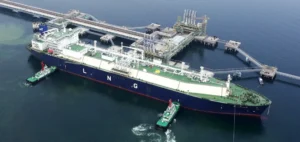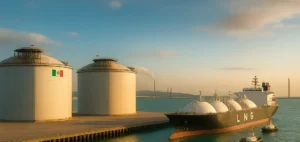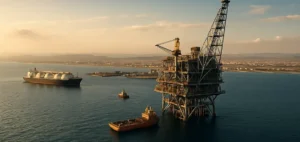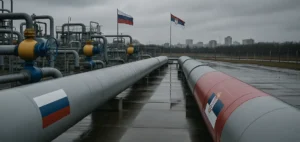Hurricane Helene, now classified as Category 3, is advancing towards Florida with violent winds of up to 130 mph, threatening the state’s energy infrastructure and the Gulf of Mexico. Florida, a key state in terms of energy production and distribution, is already in the preparation phase, with several companies such as Florida Power & Light (FPL) having set up crisis management protocols.
The main challenge for these companies is to ensure the continuity of electricity supply despite the extreme conditions forecast.
Operators are preparing for major power outages that could affect millions of customers across the state.
Helene’s current track could also disrupt gas production in the Gulf of Mexico.
According to the Bureau of Safety and Environmental Enforcement (BSEE), around 17% of offshore natural gas production has been shut down in anticipation of the storm.
This could lead to a reduction in the supply of liquefied natural gas (LNG) to the United States and abroad.
The disruption is all the more significant given that energy infrastructures in this region are already under pressure following the passage of other hurricanes this year.
Preparations by energy operators
Major power and gas operators in Florida and neighboring states, such as Duke Energy, Tampa Electric, and Georgia Power, are anticipating major potential damage to their infrastructures.
These companies have mobilized thousands of technicians and pre-positioned equipment in strategic areas to respond quickly to anticipated massive power outages.
Duke Energy, for example, has already relocated more than 8,000 employees to areas less exposed to the storm to ensure rapid response once the situation is secure.
Risks to nuclear power plants in Alabama and Georgia are also being closely monitored.
The Joseph M. Farley power plant in Alabama lies close to the current hurricane track.
Additional precautionary measures are being implemented to ensure the safety of the facilities, although they are designed to withstand such extreme weather conditions.
Impact on gas production and LNG
Gas production in the Gulf of Mexico accounts for a significant proportion of US gas supplies.
With 17% of offshore production already interrupted, the reduction could be amplified as the hurricane progresses.
LNG terminals, such as Elba Island in Georgia, are on alert and have activated their storm response plans.
Although operators have not yet announced any major disruptions to LNG exports, they are closely monitoring the situation.
Lower offshore gas production could lead to higher prices in the short term, although the effects on the market will depend on the duration and scale of interruptions.
The potential impact on energy supply chains is a matter of concern for industry players, particularly against a backdrop of increased demand for natural gas and LNG on international markets.
Anticipating economic damage
Hurricane Helene could result in considerable economic losses, particularly due to the disruption of energy production and transmission infrastructures.
If energy infrastructures are severely damaged, the consequences could extend far beyond Florida.
Power outages, combined with a drop in gas production, could impact not only the region, but also the national energy supply, particularly in the southeastern states of the USA.
Electricity markets have already shown signs of volatility in anticipation of the hurricane.
Wholesale electricity prices in the region have fallen slightly, but long-term price increases are possible due to the logistical challenges that prolonged power outages and reduced gas production could pose.
Federal and state authorities, in coordination with companies such as Duke Energy and Kinder Morgan, are monitoring the situation closely and have begun mobilizing resources to minimize the storm’s effects on energy infrastructure.
However, it remains difficult to predict the exact extent of the damage until the hurricane makes landfall.





















